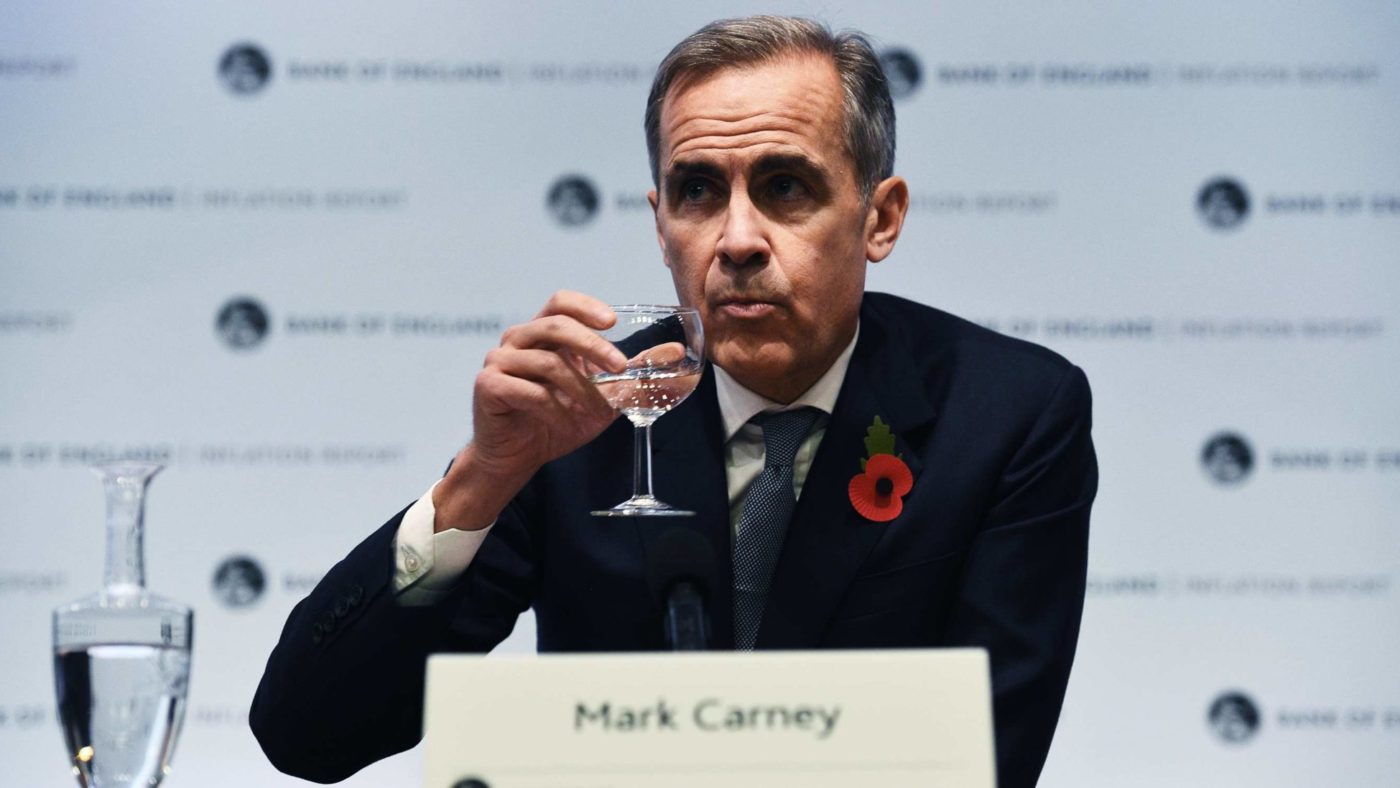This week’s papers have not made easy reading for Bank of England governor Mark Carney.
His former colleague Andrew Sentance, the Monetary Policy Committee’s best known hawk of recent years (he voted unsuccessfully for interest rate rises at each of his last 12 MPC meetings), told the Times that Carney has made the Bank “timid” and susceptible to “group think”, while damaging productivity and endangering the Old Lady’s reputation for independence.
Sentance is right, but the rot goes back earlier than he suggests. The problem really started back in 2004, when former governor Mervyn King was outvoted on an attempt to raise interest rates, as the rest of the Committee was intimidated by the risk of inducing a house price crash, rather than focused on its job of keeping inflation to target and the economy’s long-term growth prospects solid. This got worse in late 2006, when even though it predicted that inflation would exceed the 3 per cent threshold that had until then been regarded as an inviolable ceiling, the MPC did not raise rates.
When inflation exceeded target in 2007 and for the first time the Bank of England governor had to write a letter to the Chancellor explaining why that had been permitted and what the Bank intended to do to rectify matters, MPC members began to argue that the 3 per cent threshold was not a ceiling at all — more of a guideline. Having decided that no such limit existed, the MPC gave up all attempts to keep inflation to target, with a near-relentless series of letters being sent to the Chancellor ever since, and not once has a Chancellor criticised the Bank for this blatant, persistent and repeated failure.
The Bank having long since abandoned its credibility with respect to inflation, it was no real surprise that once Carney was appointed governor, it abandoned what little credibility it had in other matters too. He was appointed with the more-or-less explicit political task of providing a slap-dash lacquer of justification for why interest rates should not rise. This began with his notorious “forward guidance” for when interest rates would supposedly go up, with targets for how far unemployment must fall and various others. When these were promptly met, far sooner than he had anticipated, “forward guidance” was reinvented from guidance as to when interest rates would rise into guidance as to when they wouldn’t.
Interest rates were (quite rightly) set at an emergency level in early 2009. But the thing about emergency action is that it is very often harmful if you keep doing it after the emergency has passed. There is a time and a place for giving a patient an electric shock to his heart, or for cutting him open and taking pieces of him out. But if you electrocute his heart when it’s not in attack, or cut pieces out of him that are perfectly healthy and he might need, that’s unlikely to do much good in the long run.
So it is with emergency interest rates. We should not need an excuse to stop emergency levels of interest rates any more than we should need an excuse to stop electrocuting someone’s heart. Rather, we should require an excuse to keep doing it. But in a grand reversal, whereas the justification for emergency interest rates was gone by 2011 and certainly gone by 2012, the MPC resolutely (despite Sentance’s best efforts) persisted in the notion that the data did not force it to raise.
As Sentance argues, this decision to keep monetary policy excessively loose, in combination with the abandonment of the Bank’s inflation targeting credibility, has very probably damaged the UK’s productivity. Economies do not grow fastest, over the medium term, with interest rates as loose as one can get away with. They grow fastest when interest rates are at their correct equilibrium level, called the “natural rate of interest”.
Setting rates below that level means that capital investments do not need to deliver as high a return in order to be profitable and so continued. That dulls incentives for firms to keep improving their efficiency and to keep innovating with new products and new production methods. Those duller incentives mean the economy grows slower. In the UK’s case they probably mean that firms have been content to use labour when they might have used machines, and to pay less to what would have been their more productive workers had interest rates been higher.
Sentance also correctly notes that excessively low interest rates have made it harder for first-time buyers to purchase their houses. Higher prices mean higher deposits, so even if the total lifetime cost of the mortgage is the same, it’s tougher to get started.
The hopeful side of this story is that interest rates are now rising internationally, and even in the UK they’ve started rising slightly. As UK rates are dragged up (probably kicking and screaming), productivity and hence GDP growth will accelerate faster than the Bank of England and other gloomy commentators currently expect. Beyond Brexit, higher interest rates are likely to be the dominant economic story of the next five years — and one that will be mainly good news. If that does turn out to be the case, Sentance will be entitled to look back with a certain I-told-you-so satisfaction.


